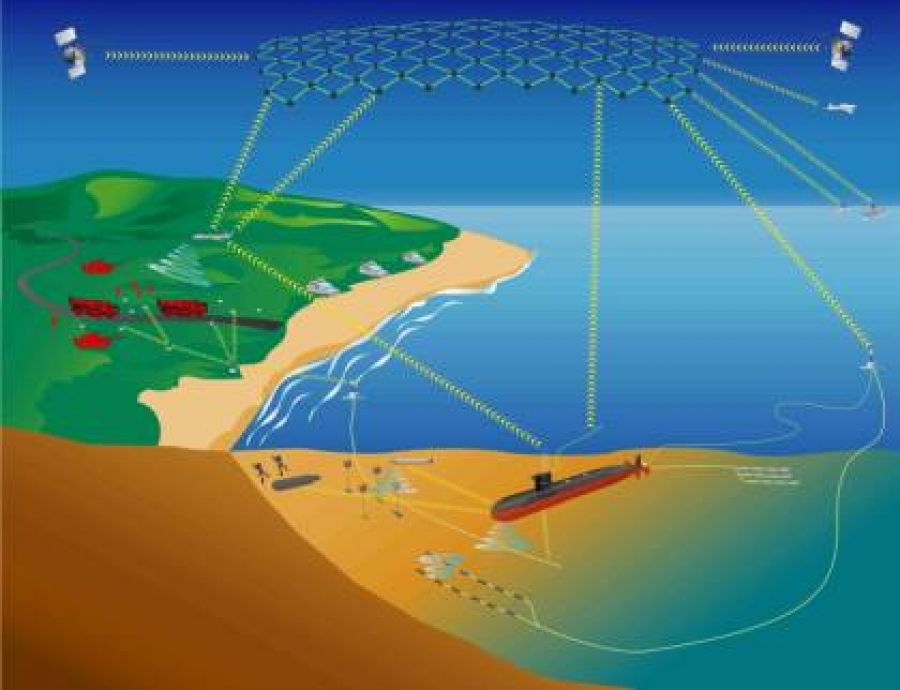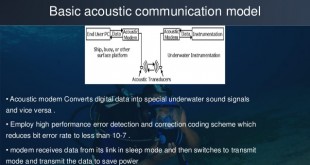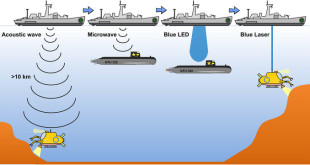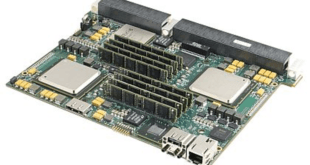Underwater communication is vital for undersea exploitation and modern communication. Conventional ways which employ acoustical technique for underwater communication have their drawbacks including high path loss, narrow bandwidth, high bit error rate, among which unconditional security is more demanding due to commercial and secure interest. Submarine communications have always been a challenge …
Read More »Meteor scatter or Meteor burst communications (MBC) can provide anti-jamming, nuclear survivable backup to satellite communications even in Arctic Region
As warfighting has progressively become more sophisticated, involving larger forces, encompassing greater areas, and containing many new and more lethal weapon systems, the communication systems supporting the command and control functions have undergone a similar evolution. Communication methods have evolved to the capability of rapidly establishing worldwide “real time” communications …
Read More »DOD regards Electromagnetic Spectrum (EMS) as a critical battlespace in its own right, and launch it’s Electromagnetic Spectrum Dominance Strategy
Successful military operations depend upon freedom of action in the warfighting domains of air, space, ground, sea, and cyberspace. Today, effective command and control and situational awareness depend upon radio communications and sensors. Domination of the electromagnetic spectrum (EMS) enables joint force commanders to gain tactical, operational, and strategic advantage …
Read More »Wideband High Frequency(HF) communications provide net-centric, high-speed beyond line of sight communications in Anti-Access/Area Denial (A2/AD) battlefield environments
Whether in the field of battle, search-and-rescue or humanitarian aid efforts, the ability to share real-time, networked information between ground, sea and airborne forces is rapidly becoming the defining factor in a mission’s success. However modern satellite and other communications systems in higher frequecies are under constant threat from adversaries …
Read More »Future Smart Soliders require Man-portable military electronic systems
The vision for the future soldier is to be combat effective and also highly mobile, adaptive, networked, sustainable with total battle space situation awareness and information assurance. Therefore, he is equipped with night- vision goggles, radios, smartphones, GPS, infrared sights, a laptop as well as batteries to power them. …
Read More »DARPA CONCERTO developing single reconfigurable UAV payload for communications, radar and electronic warfare functions to enhance UAS adaptability and mission efficiency
Unmanned Aerial Systems are gaining more importance every single day. Unmanned Aircraft Systems (UAS) are used for both defensive and offensive purposes. Different sizes and capabilities of UAS support a variety of different applications. Improved networking capabilities have enlarged the boundaries of UAS operations. Nations are working on more complex and …
Read More »DARPA OPS-5G to mitigate security threats facing 5G and future wireless networks in military appliations
5G is the latest in a series of evolutions in public mobile networking, with widespread coverage and access on a subscription basis. 5G networks are characterized by improved capabilities across a variety of measures, including throughputs, latencies, numbers of devices, and battery life. 5G is used to attach small special …
Read More »Underwater Acoustic Wave (UWAC) Communication technologies including Acoustic Modems enable Unmanned Underwater Vehicles (UUWs) missions
Approximately 70% of the Earth’s surface is covered by water, yet almost 95% of the underwater world remains unexplored. Nearly 4000 robots are swimming up and down in the world’s oceans, which allow scientists to measure and understand ocean dynamics, like the directions and speeds of currents, as well as …
Read More »Underwater Communication technologies critical for submarine, AUVs and ASW operations
Approximately 70% of the Earth’s surface is covered by water, yet almost 95% of the underwater world remains unexplored. Nearly 4000 robots are swimming up and down in the world’s oceans, which allow scientists to measure and understand ocean dynamics, like the directions and speeds of currents, as well as …
Read More »Military Embedded systems technologies enter large market growth driven by geopolitical rivalry and regional tensions
An “embedded system” is a word made by shortening “computer embedded system” meaning a system product or an electronic device into which a computer has been integrated. An embedded system is a controller that sits within a larger system in order to perform a dedicated function. An embedded system is …
Read More » International Defense Security & Technology Your trusted Source for News, Research and Analysis
International Defense Security & Technology Your trusted Source for News, Research and Analysis









